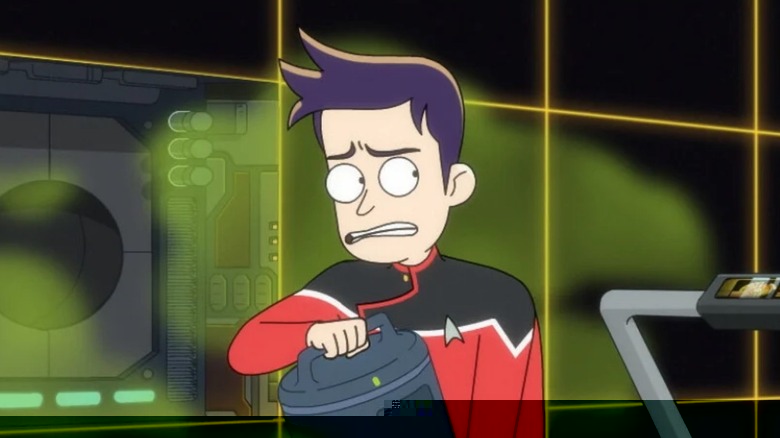Star Trek: How Does The Holodeck Actually Work?
When listing the most iconic pieces of tech from the various "Star Trek" shows and movies, the transporter, phaser, and tricorder all rise to the top of any survey. But we'd be remiss not to mention the holodeck. Made famous in "Star Trek: The Next Generation" and appearing even on shows like the animated "Star Trek: Lower Decks," the virtual space has become a pillar of the franchise and prompted some of the best "Star Trek" episodes ever.
Holodeck adventures are often fan favorites, but "Star Trek" has spent notably less time exploring how the device actually works. The worlds it conjures are so lifelike and expansive in scale that they seem impossible, which, of course, they are, at least in our world. In the "Trek" universe, however, we do know at least a bit about what makes the holodeck tick.
The mechanics of the holodeck are similar to those of two other big pieces of "Trek" tech — the transporter and the replicator. The things created within the virtual room are a combination of generated matter (using replicator technology) and photons encased in force fields that create the impression of physical matter. This is also why material from within the holodeck occasionally appears to exit and exist beyond its virtual walls for a brief period of time.
How the holodeck changed over the years
Watching the various "Star Trek" series, you'll see the subtle evolution of holodeck technology. In "Star Trek: Enterprise," before humans have access to the technology, it's revealed that similar holographic tech was used by the Xyrillians. A more rudimentary version of a holodeck also appears in "Star Trek: The Animated Series." "Star Trek: Voyager" expands the perception of holograms in "Star Trek" immensely through its Doctor character, a holographic medical officer who is able to learn, love, achieve sentience, and even evolve.
Visually, holodecks have also changed quite a bit over the years. In "The Next Generation," the inactive room basically just looks like a cyber grid. This design was fleshed out more in the holosuites of "Star Trek: Deep Space Nine" due to larger budget allowances.
"When we did 'Next Generation' we were in a budget constraint that made us do a set that is a wireframe look; it's a grid of squares when the holodeck is not activated and they just see a black void with yellow grids," production designer Herman Zimmerman revealed in "The Deep Space Log Book," a companion piece to the show's second season. "In the Cardassian holodeck when the lights go off, so to speak, you see the machinery that creates the imagery. It's a step forward for us and it's something we've always wanted to do on 'Next Generation' and we were never able to achieve."

